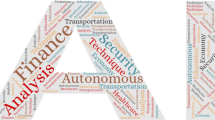Abstract
This paper presents results of a research in the field of software development, design methods, as well as training and synthesis of binary neural networks. The research is based on the model of a biomorphic neuron proposed by A.A. Zhdanov, which features noise immunity and is capable of forgetting and additional training. Software tools for designing and visualizing the modeling of binary neural structures are described. Use cases and features of a formal markup language for neural network models, as well as principles of generating deep learning structures, are discussed. A neural network markup language interpreter can automatically generate source code in Verilog with the description of the neural-like implementation of intelligent systems for software and hardware solutions on programmable logic devices (PLDs).









Similar content being viewed by others
Explore related subjects
Discover the latest articles, news and stories from top researchers in related subjects.Notes
An example is the explosive growth in neural network recognition technologies with the advent of specialized graphics accelerators in 2006.
REFERENCES
Brewer, G.J., Boehler, M.D., Pearson, R.A., DeMaris, A.A., Ide, A.N., and Wheeler, B.C., Neuron network activity scales exponentially with synapse density, J. Neural Eng., 2008, vol. 6, no. 1. https://doi.org/10.1088/1741-2560/6/1/014001
Zhdanov, A.A., Avtonomnyi iskusstvennyi intellekt (Autonomous Artificial Intelligence), Moscow: BINOM. Laboratoriya znanii, 2009, 2nd ed.
Zhdanov, A.A., Kryzhanovskii, M.V., and Preobrazhenskii, N.B., Bionic intelligent adaptive control system for the mobile robot, Iskusstvennyi Intellekt, 2002, vol. 4, pp. 341–350.
Mishustin, I.A., Preobrazhenskii, N.B., Zhdanov, A.A., and Stepanyan, I.V., Hardware implementation of a neural-like network capable of recognizing noisy patterns, Neirokomp’yutery Razrab. Primen., 2018, no. 6, pp. 19–25.
Stepanyan, I.V. and Ziep, N.N., Growing convolutional neural-like structures for static pattern recognition problems, Neirokomp’yutery Razrab. Primen., 2018, no. 5, pp. 4–11.
Vella, M., Cannon, R.C., Crook, S., Davison, A.P., Ganapathy, G., Robinson, H.P., Silver, R.A., and Gleeson, P., libNeuroML and PyLEMS: Using Python to combine procedural and declarative modeling approaches in computational neuroscience, Front. Neuroinf., 2014, vol. 8, p. 38.
Ponulak, F., Introduction to spiking neural networks: Information processing, learning and applications, Acta Neurobiol. Exp., 2010, vol. 71, pp. 409–433.
Maas, W., Networks of spiking neurons: The third generation of neural network models, Neural Networks, 1997, vol. 10, pp. 1659–1671. https://doi.org/10.1016/S0893-6080(97)00011-7
Davies, M., Srinivasa, N., Lin, T.-H., Chinya, G., Cao, Y., Choday, S.H., Dimou, G., Joshi, P., Imam, N., Jain, S., Liao, Y., Lin, C.-K., Lines, A., Liu, R., Mathaikutty, D., McCoy, S., Paul, A., Tse, J., Venkataramanan, G., Weng, Y.-H., Wild, A., Yang, Y., and Wang, H., Loihi: A neuromorphic manycore processor with on-chip learning, IEEE Micro, 2018, vol. 38, no. 1, pp. 82–99. https://doi.org/10.1109/MM.2018.112130359
Schmidhuber, J., Deep learning in neural networks: An overview, Neural Networks, 2015, vol. 61, pp. 85–117.
LeCun, Y. and Bengio, Y., Convolutional networks for images, speech, and time-series, The Handbook of Brain Theory and Neural Networks, Arbib, M.A., Ed., MIT Press, 1995.
Dileep, G. and Jeff, H., Towards a mathematical theory of cortical micro-circuits, PLoS Comput. Biol., 2009, vol. 5, no. 10, p. E1000532.
Stepanyan, I.V., Lekomtsev, D.A., and Zhdanov, A.A., State Registration Certificate on PC Program no. 2016611299, Computer-aided design system for biomorphic neural networks Neurox, 2016.
Zhdanov, A.A., Nguyen Ngoc Diep, Perskii, G.S., Peshenko, R.E., Pizhonkov, A.G., Stepanyan, I.V., and Syamiullin, Z.S., State Registration Certificate on PC Program no. 2018661458, A program for the dynamic synthesis of growing biosimilar structures based on artificial neurons with extended functionality and additional-training capability for pattern recognition and dynamic object control problems, 2018.
Zhdanov, A.A., Peshenko, R.E., Pizhonkov, A.G., Smirnov, S.P., and Stepanyan, I.V., State Registration Certificate on PC Program no. 2018663628, A program for multilevel autonomous control (MAC) of dynamic objects based on artificial neurons with extended functionality and additional-training capability, 2018.
Savel’ev, A.V., Neurocomputers in inventions, Neirokomp’yutery Razrab. Primen., 2004, nos. 2–3, pp. 33–49.
Savel’ev, A.V., Neurosociometodology for the problem of dialogue between neurobiology and neuromodeling, Neirokomp’yutery Razrab. Primen., 2011, no. 1, pp. 47–63.
Author information
Authors and Affiliations
Corresponding author
Additional information
Translated by Yu. Kornienko
Rights and permissions
About this article
Cite this article
Stepanyan, I.V. Methodology and Tools for Designing Binary Neural Networks. Program Comput Soft 46, 49–56 (2020). https://doi.org/10.1134/S0361768820010065
Received:
Revised:
Accepted:
Published:
Issue Date:
DOI: https://doi.org/10.1134/S0361768820010065




